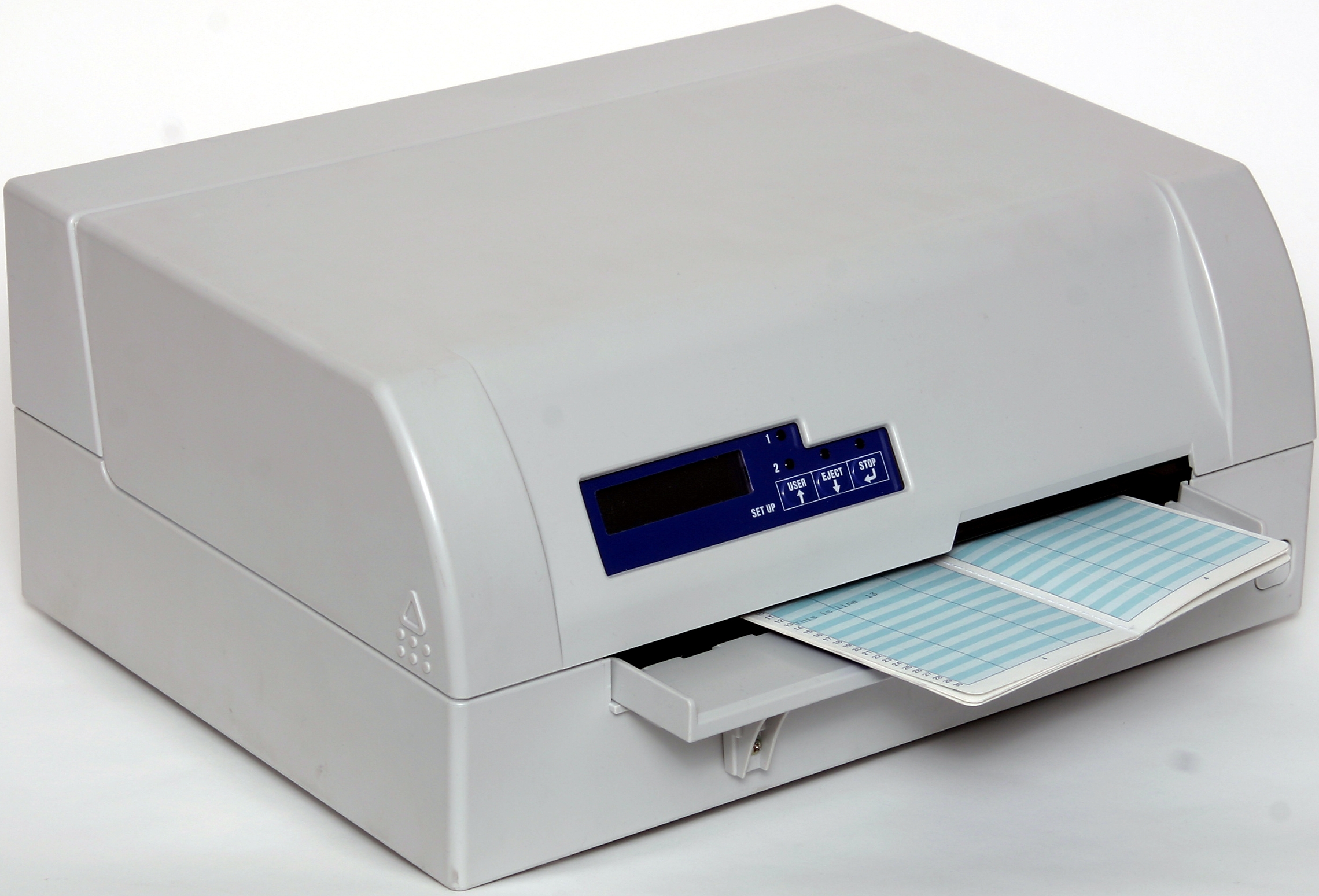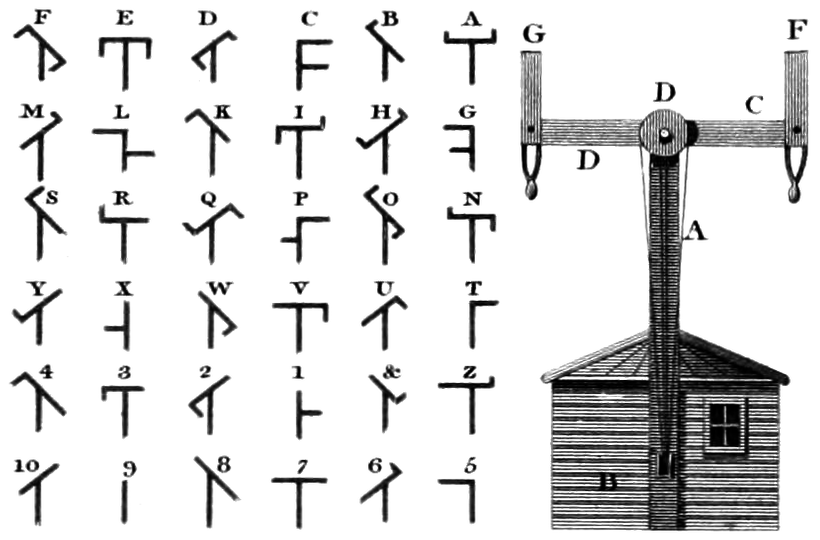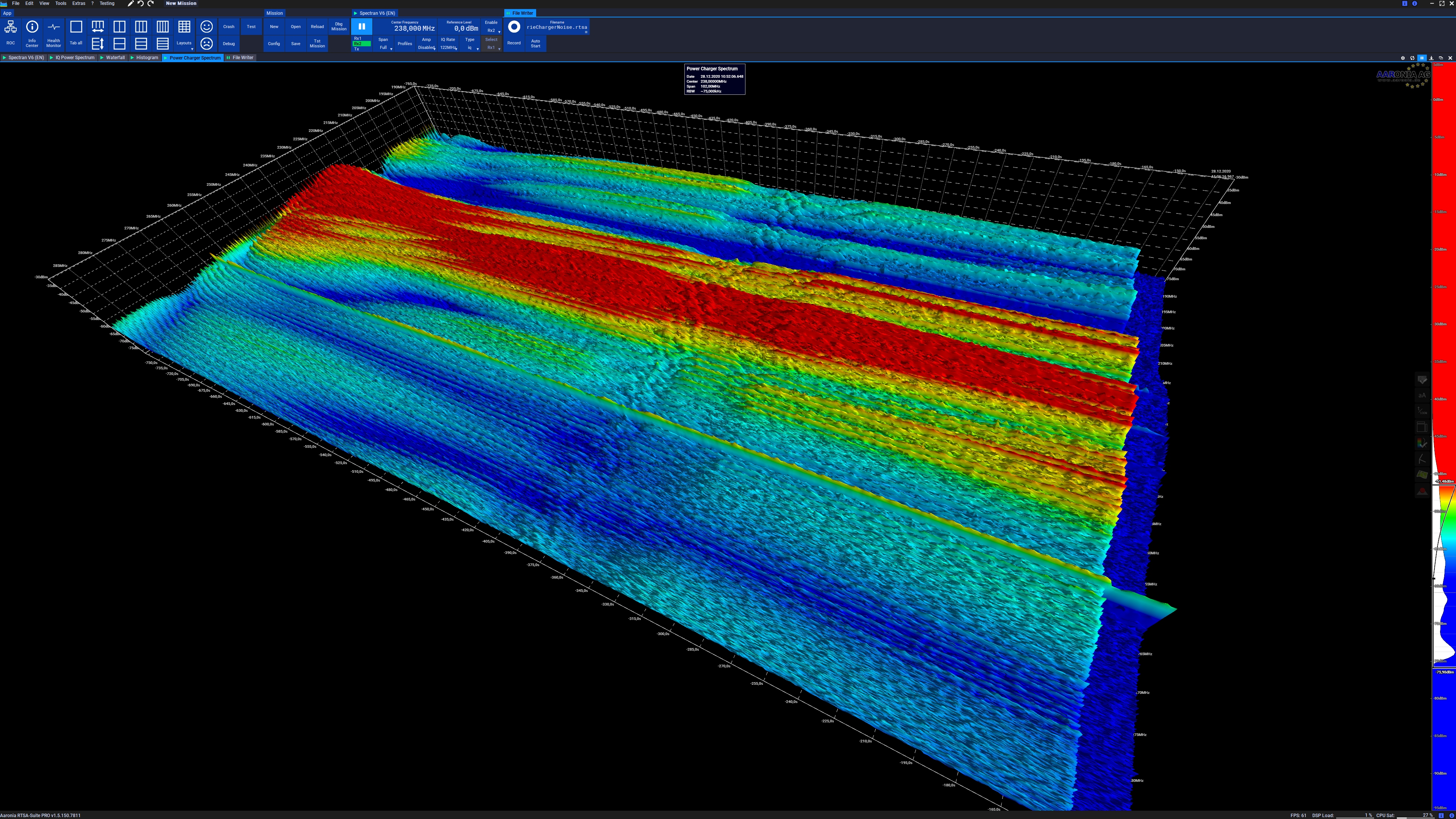|
Hellschreiber
The Hellschreiber, Feldhellschreiber or Typenbildfeldfernschreiber (also Hell-Schreiber named after its inventor Rudolf Hell) is a facsimile-based teleprinter invented by Rudolf Hell. Compared to contemporary teleprinters that were based on typewriter systems and were mechanically complex and expensive, the Hellschreiber was much simpler and more robust, with far fewer moving parts. It has the added advantage of being capable of providing intelligible communication even over very poor quality radio or cable links, where voice or other teledata would be unintelligible. The device was first developed in the late 1920s, and saw use starting in the 1930s, chiefly being used for land-line press services. During WW2 it was sometimes used by the German military in conjunction with the Enigma encryption system. In the post-war era, it became increasingly common among newswire services, and was used in this role well into the 1980s. In modern times Hellschreiber is used as a communicati ... [...More Info...] [...Related Items...] OR: [Wikipedia] [Google] [Baidu] |
Feldhell
The Hellschreiber, Feldhellschreiber or Typenbildfeldfernschreiber (also Hell-Schreiber named after its inventor Rudolf Hell) is a fax, facsimile-based teleprinter invented by Rudolf Hell. Compared to contemporary teleprinters that were based on typewriter systems and were mechanically complex and expensive, the Hellschreiber was much simpler and more robust, with far fewer moving parts. It has the added advantage of being capable of providing intelligible communication even over very poor quality radio or cable links, where voice or other teledata would be unintelligible. The device was first developed in the late 1920s, and saw use starting in the 1930s, chiefly being used for land-line press services. During WW2 it was sometimes used by the Wehrmacht, German military in conjunction with the Enigma machine, Enigma encryption system. In the post-war era, it became increasingly common among newswire services, and was used in this role well into the 1980s. In modern times Hellsc ... [...More Info...] [...Related Items...] OR: [Wikipedia] [Google] [Baidu] |
Rudolf Hell
Rudolf Hell (19 December 1901 – 11 March 2002) was a German inventor and engineer. Career Hell was born in Eggmühl. From 1919 to 1923, he studied electrical engineering in Munich. He worked there from 1923 to 1929 as assistant of Prof. Max Dieckmann, with whom he operated a television station at the ''Verkehrsausstellung'' (lit.: "traffic exhibition") in Munich in 1925. In the same year Hell invented an apparatus called the ''Hellschreiber'', an early forerunner to impact dot matrix printers and faxes. Hell received a patent for the Hellschreiber in 1929. In the year 1929 he founded his own company in Babelsberg, Berlin. After World War II he re-founded his company in Kiel. He kept on working as an engineer and invented machines for electronically controlled engraving of printing plates and an electronic photo typesetting system called ''digiset'' marketed in the US as ''VideoComp'' by RCA and later by III. He has received numerous awards such as the Knight Commander's C ... [...More Info...] [...Related Items...] OR: [Wikipedia] [Google] [Baidu] |
Dot Matrix Teletypewriter
Dot matrix printing, sometimes called impact matrix printing, is a computer printing process in which ink is applied to a surface using a relatively low-resolution dot matrix for layout. Dot matrix printers typically use a print head that moves back and forth or in an up-and-down motion on the page and prints by impact, striking an ink-soaked cloth ribbon against the paper, much like the print mechanism on a typewriter or line printer. However, a dot matrix printer is able to print arbitrary patterns and not just specific characters. The perceived quality of dot matrix printers depends on the vertical and horizontal resolution and the ability of the printer to overlap adjacent dots. 9-pin and 24-pin are common; this specifies the number of pins in a specific vertically aligned space. With 24-pin printers, the horizontal movement can slightly overlap dots, producing visually superior output ('' near letter quality'' or ''NLQ''), usually at the cost of speed. Dot matrix printing i ... [...More Info...] [...Related Items...] OR: [Wikipedia] [Google] [Baidu] |
Amateur Radio
Amateur radio, also known as ham radio, is the use of the radio frequency spectrum for purposes of non-commercial exchange of messages, wireless experimentation, self-training, private recreation, radiosport, contesting, and emergency communications. The term "amateur" is used to specify "a duly authorised person interested in radioelectric practice with a purely personal aim and without pecuniary interest;" (either direct monetary or other similar reward) and to differentiate it from commercial broadcasting, public safety (such as police and fire), or professional two-way radio services (such as maritime, aviation, taxis, etc.). The amateur radio service (''amateur service'' and '' amateur-satellite service'') is established by the International Telecommunication Union (ITU) through the Radio Regulations. National governments regulate technical and operational characteristics of transmissions and issue individual station licenses with a unique identifying call sign, which mus ... [...More Info...] [...Related Items...] OR: [Wikipedia] [Google] [Baidu] |
Amateur Radio
Amateur radio, also known as ham radio, is the use of the radio frequency spectrum for purposes of non-commercial exchange of messages, wireless experimentation, self-training, private recreation, radiosport, contesting, and emergency communications. The term "amateur" is used to specify "a duly authorised person interested in radioelectric practice with a purely personal aim and without pecuniary interest;" (either direct monetary or other similar reward) and to differentiate it from commercial broadcasting, public safety (such as police and fire), or professional two-way radio services (such as maritime, aviation, taxis, etc.). The amateur radio service (''amateur service'' and '' amateur-satellite service'') is established by the International Telecommunication Union (ITU) through the Radio Regulations. National governments regulate technical and operational characteristics of transmissions and issue individual station licenses with a unique identifying call sign, which mus ... [...More Info...] [...Related Items...] OR: [Wikipedia] [Google] [Baidu] |
1929 In Science
The year 1929 in science and technology involved some significant events, listed below. Astronomy and space exploration * July – Henry Norris Russell publishes his finding that hydrogen is the principal constituent of stars, acknowledging the previous demonstration of this by Cecilia Payne. * July 17 – Robert H. Goddard tests the first rocket to carry scientific instruments (a barometer and a camera). * Edwin Hubble publishes his discovery that the speed at which galaxies recede positively correlates with their distance, which becomes known as Hubble's law, the basis for understanding that the universe is expanding. * George Gamow proposes hydrogen fusion as the energy source for stars. * Clyde Tombaugh discovers several asteroids: 2839 Annette, 3583 Burdett, 3824 Brendalee, 1929 VS, 1929 VD1. * Harold Horton Sheldon writes about the serious possibility of man visiting other planets through the use of rockets. * Konstantin Tsiolkovsky proposes the construction of multistag ... [...More Info...] [...Related Items...] OR: [Wikipedia] [Google] [Baidu] |
Teleprinter
A teleprinter (teletypewriter, teletype or TTY) is an electromechanical device that can be used to send and receive typed messages through various communications channels, in both point-to-point and point-to-multipoint configurations. Initially they were used in telegraphy, which developed in the late 1830s and 1840s as the first use of electrical engineering, though teleprinters were not used for telegraphy until 1887 at the earliest. The machines were adapted to provide a user interface to early mainframe computers and minicomputers, sending typed data to the computer and printing the response. Some models could also be used to create punched tape for data storage (either from typed input or from data received from a remote source) and to read back such tape for local printing or transmission. Teleprinters could use a variety of different communication media. These included a simple pair of wires; dedicated non-switched telephone circuits (leased lines); switched network ... [...More Info...] [...Related Items...] OR: [Wikipedia] [Google] [Baidu] |
Telegraphy
Telegraphy is the long-distance transmission of messages where the sender uses symbolic codes, known to the recipient, rather than a physical exchange of an object bearing the message. Thus flag semaphore is a method of telegraphy, whereas pigeon post is not. Ancient signalling systems, although sometimes quite extensive and sophisticated as in China, were generally not capable of transmitting arbitrary text messages. Possible messages were fixed and predetermined and such systems are thus not true telegraphs. The earliest true telegraph put into widespread use was the optical telegraph of Claude Chappe, invented in the late 18th century. The system was used extensively in France, and European nations occupied by France, during the Napoleonic era. The electric telegraph started to replace the optical telegraph in the mid-19th century. It was first taken up in Britain in the form of the Cooke and Wheatstone telegraph, initially used mostly as an aid to railway signalling. Th ... [...More Info...] [...Related Items...] OR: [Wikipedia] [Google] [Baidu] |
German Inventions
German inventions and discoveries are ideas, objects, processes or techniques invented, innovated or discovered, partially or entirely, in Germany or abroad by a person from Germany (that is, someone born in Germany – including to non-German parents – or born abroad with at least one German parent and who had the majority of their education or career in Germany). Often, things Discovery (observation), discovered for the first time are also called inventions and in many cases, there is no clear line between the two. Germany has been the home of many List of German inventors and discoverers, famous inventors, discoverers and engineers, including Carl von Linde, who developed the modern refrigerator; Paul Gottlieb Nipkow, Paul Nipkow and Karl Ferdinand Braun, who laid the foundation of the television with their Nipkow disk and cathode-ray tube (or Braun tube) respectively; Hans Geiger, the creator of the Geiger counter; and Konrad Zuse, who built the first fully automatic dig ... [...More Info...] [...Related Items...] OR: [Wikipedia] [Google] [Baidu] |
History Of Telecommunications
The history of telecommunication began with the use of smoke signals and drum (communication), drums in Africa, Asia, and the Americas. In the 1790s, the first fixed semaphore line, semaphore systems emerged in Europe. However, it was not until the 1830s that electrical telecommunication systems started to appear. This article details the history of telecommunication and the individuals who helped make telecommunication systems what they are today. The history of telecommunication is an important part of the larger history of communication. Ancient systems and optical telegraphy Early telecommunications included smoke signals and drum (communication), drums. Talking drums were used by natives in Africa, and smoke signals in North America and China. These systems were often used to do more than announce the presence of a military camp. In Azazel#Rabbinical_Judaism, Rabbinical Judaism a signal was given by means of kerchiefs or flags at intervals along the way back to the high p ... [...More Info...] [...Related Items...] OR: [Wikipedia] [Google] [Baidu] |
Impact Matrix Printers
Impact may refer to: * Impact (mechanics), a high force or shock (mechanics) over a short time period * Impact, Texas, a town in Taylor County, Texas, US Science and technology * Impact crater, a meteor crater caused by an impact event * Impact event, the collision of a meteoroid, asteroid or comet with Earth * Impact factor, a measure of the citations to a science or social science journal Books and magazines * ''Impact'' (novel), a 2010 novel by Douglas Preston *''Impact Press'', a former Orlando, Florida-based magazine * Impact Magazines, a former UK magazine publisher * ''Impact'' (conservative magazine), a British political magazine * ''Impact'' (British magazine), a British action film magazine * ''Impact'', a French action film magazine spun off from ''Mad Movies'' * ''Impact'' (UNESCO magazine), a former UNESCO quarterly titled ''IMPACT of science on society'' * ''Impact'' (student magazine), a student magazine for the University of Nottingham, England * ''Bathimp ... [...More Info...] [...Related Items...] OR: [Wikipedia] [Google] [Baidu] |
Spectrogram
A spectrogram is a visual representation of the spectrum of frequencies of a signal as it varies with time. When applied to an audio signal, spectrograms are sometimes called sonographs, voiceprints, or voicegrams. When the data are represented in a 3D plot they may be called ''waterfall displays''. Spectrograms are used extensively in the fields of music, linguistics, sonar, radar, speech processing, seismology, and others. Spectrograms of audio can be used to identify spoken words phonetically, and to analyse the various calls of animals. A spectrogram can be generated by an optical spectrometer, a bank of band-pass filters, by Fourier transform or by a wavelet transform (in which case it is also known as a scaleogram or scalogram). A spectrogram is usually depicted as a heat map, i.e., as an image with the intensity shown by varying the colour or brightness. Format A common format is a graph with two geometric dimensions: one axis represents time, and the other axis r ... [...More Info...] [...Related Items...] OR: [Wikipedia] [Google] [Baidu] |









